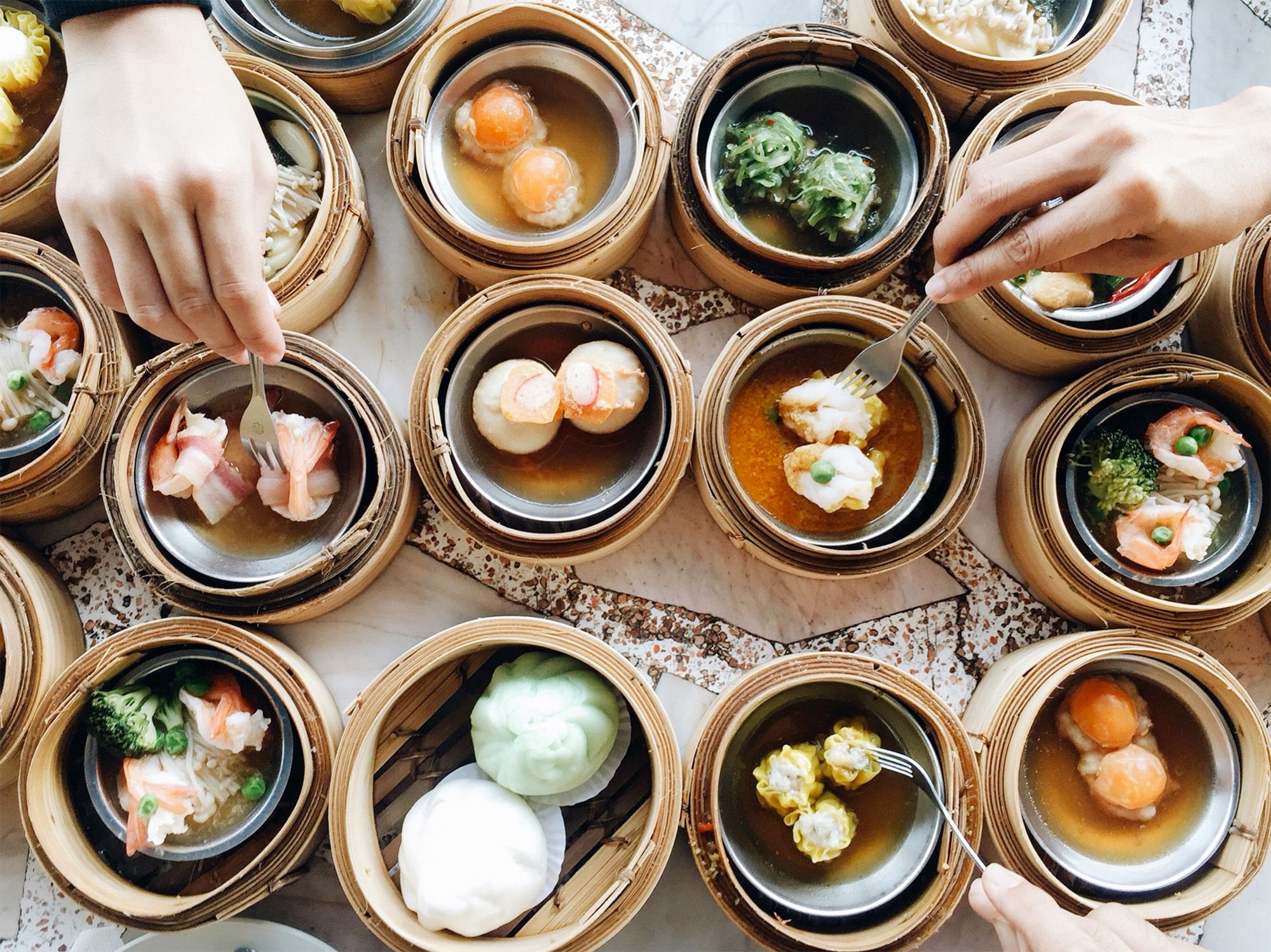Dumpling Folding Techniques for Dim Sum Lovers

Dim sum refers to a range of Chinese small plates and snacks, traditionally enjoyed for breakfast or brunch. Nowadays, most modern restaurants serve them round-the-clock, even for late-night dinners. Chinese cooking expert and cookbook author Eileen Lo says travelers used to rest and refuel at Cantonese teahouses. They'd enjoy yum cha, a small meal with tea. The practice eventually evolved into the dim sum culture known today.
But Wait, What Does Dim Sum Mean?
The phrase translates to “touch the heart” or “touching heart.” Some sources claim that it refers to how the small portions are supposed to tide you over, not sate the appetite completely. Others say it's how each dish is made with tender care. Still, more insist that it’s about ordering what looks good for you. After all, a unique aspect of the cuisine is how diners select dishes from steam-heated food carts. Servers will either ask what you prefer from the assortment or take your orders and bring them over piping hot.
Perhaps all the above are possible explanations. Regardless of dim sum's exact meaning, the experience is undoubtedly cheerful and heartwarming. There are various types available to suit a variety of tastes. You can enjoy these bite-sized delights “family-style,” so everyone gets to sample everything on the table. It’s an opportunity to bond with loved ones over yummy food and discoveries.
3 Classic Dim Sum Types Pinoys Love
Many Filipinos can't help but love Chinese cuisine, especially since it is so prevalent in the country. Chinese food has even lent influence to what have become local culinary icons, like lumpia, siopao, and siomai. Each one is a variation of traditional dim sum recipes. Do you love your dumplings? Learn more about the Philippines' most beloved dim sum dishes:
1. Dumplings
Dumplings are soft, bite-sized pieces of dough usually wrapped around a filling. They are either boiled in water or soup, steamed, pan-seared until crispy on the bottom, or deep-fried in fat.
Siomai (shumai) is a dumpling stuffed with a mix of meat, seafood, and veggies. It has a characteristic “exposed” top for the filling to peek through. On the other hand, hakaw (hakao or hargow) are steamed shrimp dumplings with smooth, transparent wrapping. Filipinos enjoy both options with soy sauce, calamansi juice, and chili oil.
Alternatively, you can try crispy fried dumplings like wontons. Pair these with more indulgent dips, like a bright wasabi-mayo made with Lady’s Choice Real Mayonnaise. Some restaurants even fry plain wonton wrappers to enjoy as chips with dip – they’re that good together.
2. Rolls
Rolls vary – from their wrappings and fillings to how you cook them. Some, like lumpia (Filipino spring rolls), use thin paper-like wraps that become extra crunchy after frying. Lumpiang shanghai, made with a ground pork mixture, might be the most widely enjoyed local variety. It has a permanent space on Filipino menus.
Other rolls use tofu skin, rice flour, or flat rice noodles. Classic Chinese options include sin zuk gyun, a steamed bean curd roll usually stuffed with minced meat and veggies, and hā chéung (shrimp rice noodle roll), a steamed dish served with seasoned soy sauce on top.
3. Buns
Baozi (or simply bao) refers to yeast-leavened buns with fillings. Unfilled buns are called mantou. These buns can be steamed, pan-fried, or baked. Tim Ho Wan, a Hong Kong-based Michelin-star chain, is famous for its sugared and baked version of the char siu bao (barbecue pork-filled buns).
In the Philippines, you’ll find siopao (steamed buns filled with diced or ground meat) everywhere, even in convenience stores. Busy Pinoys enjoy them for a quick but filling merienda. Fun fact: though xiao long bao (soup-filled baozi) is closer in size and preparation to dumplings, it's considered a type of bun.
5 Dumpling Folding Techniques for Beginners
Dumplings appear to be the trickiest and most technique-heavy of all the varieties. They require more finesse, especially if you’re not used to prepping small, intricate pieces of food by hand. No pressure! If all else fails, you can enjoy them from a restaurant or even purchase them frozen.
However, the process of DIY dumplings can be rewarding. Get started with these beginner-friendly techniques. When you treat dumpling folding as a fun, hands-on activity, you'll get the hang of it quickly!
1. Half-moon
Place the filling in the center of the wrapper, fold it into a half-moon, and press the edges together. It creates an airtight seal to keep the contents from spilling out. You can also flatten the bottom, which makes it sit upright – the ideal shape for pan-frying.
2. Silver ingot
Start by creating a half-moon shape. Bring the two corners together over the center, moisten one corner with water, and press firmly to seal. The final form should look like tortellini. You can see this technique in wontons and mandu(Korean-style dumplings).
3.Two-pleat
This one also starts as a half-moon, but you seal it in the center. Make a fold on either side of the seal by tucking each side towards the center. Press along the top and shut the corners once the pleats are in place.
4. Four-pleat
Use the same technique as the two-pleat but do more. Create two pleats on either side of the center seal and press down once in place. The four-pleat is the quintessential dumpling shape, widely applied to classic Chinese dumplings (jiaozi).
5. Siomai-style
Saveur magazine describes homemade siomai as “dumplings so easy, you don't even have to fold them.” After all, it requires far less precision than the others. Just place your filling in the center of the wrapper and bring the sides up to cup it securely. Since siomai has an exposed top, you don't need to seal the wrapper over the filling.
Use homemade dumpling wrappers for better control since they’re already soft. If you have store-bought ones, moisten them at every step. They also tend to be smaller, making them harder to hold and fold. When stuffing your dumplings, make sure to start with a little bit of filling at a time to avoid overflowing. Once you gain more confidence and get used to the process, feel free to add more to your liking.
So, will you be making dim sum at home? If dumplings are too intricate to work with, start simpler with rolls and buns. Don’t worry if they don't look restaurant-quality right away! They're sure to taste good no matter how they look.
Suggested Article

Japanese Natto: A Quick Guide
